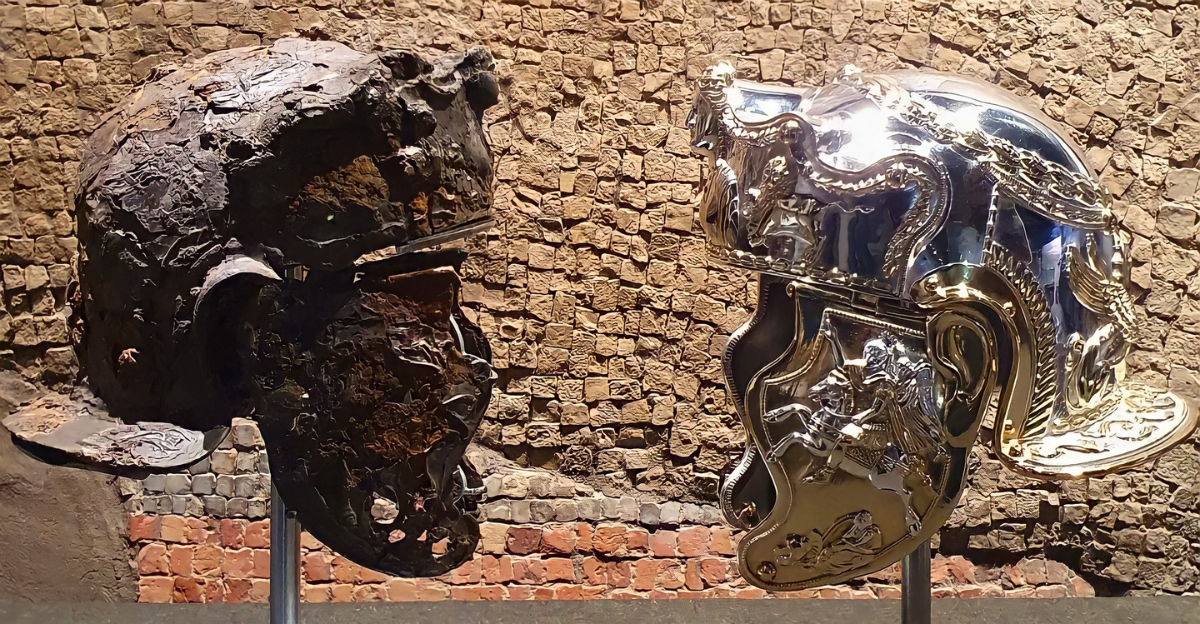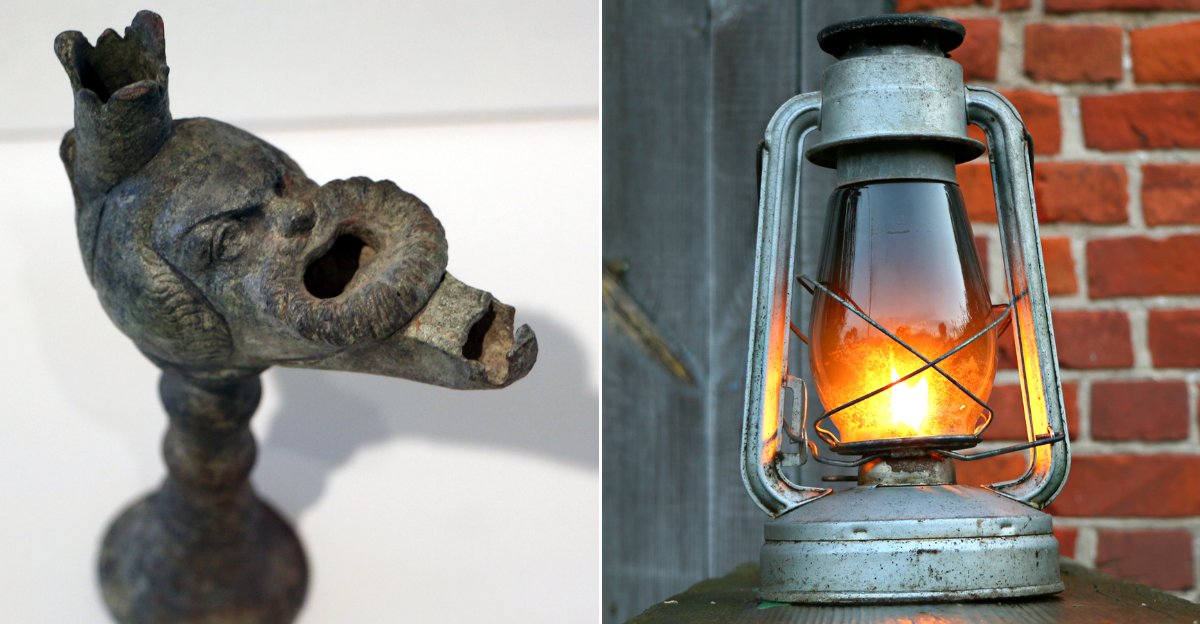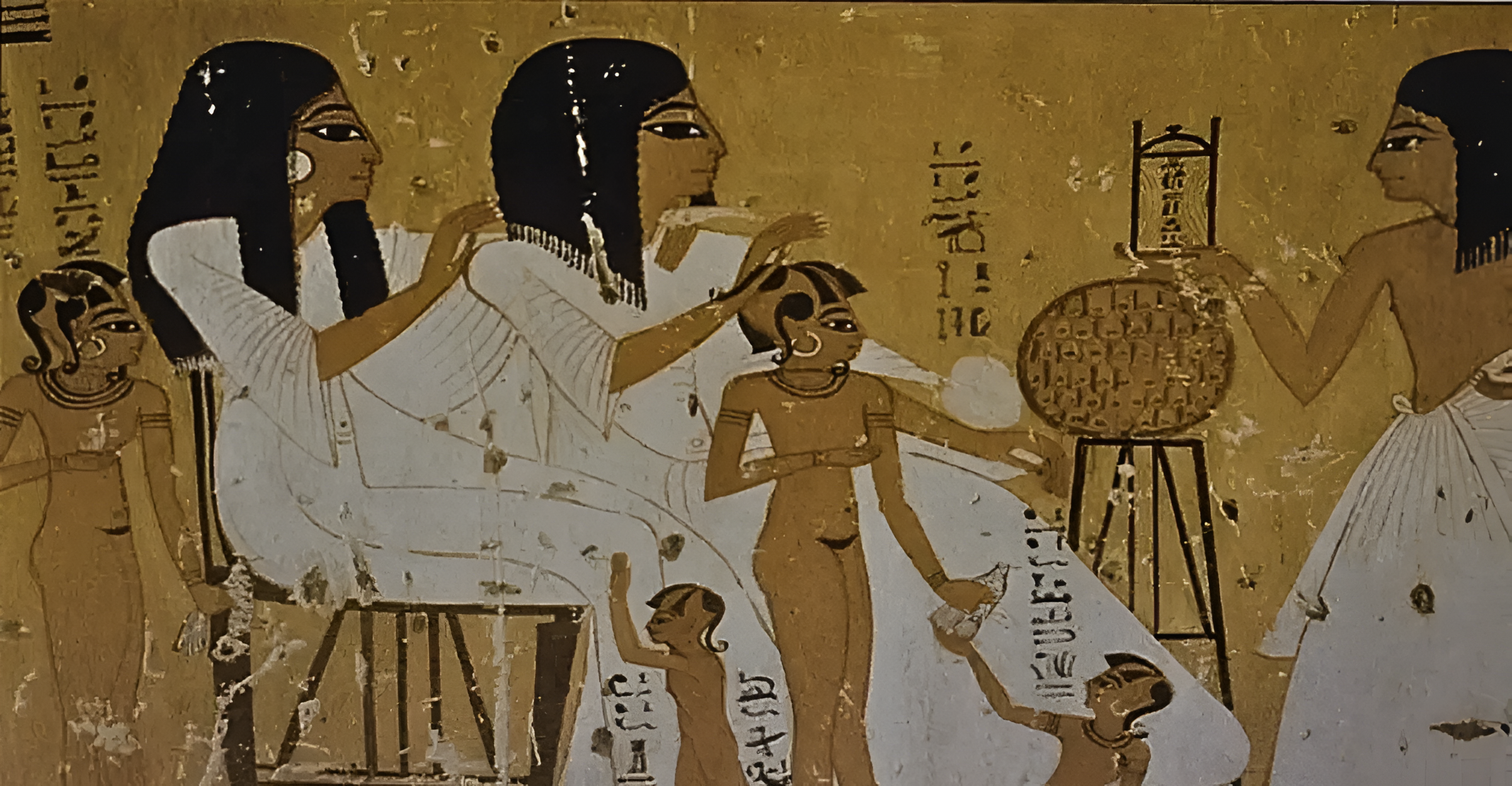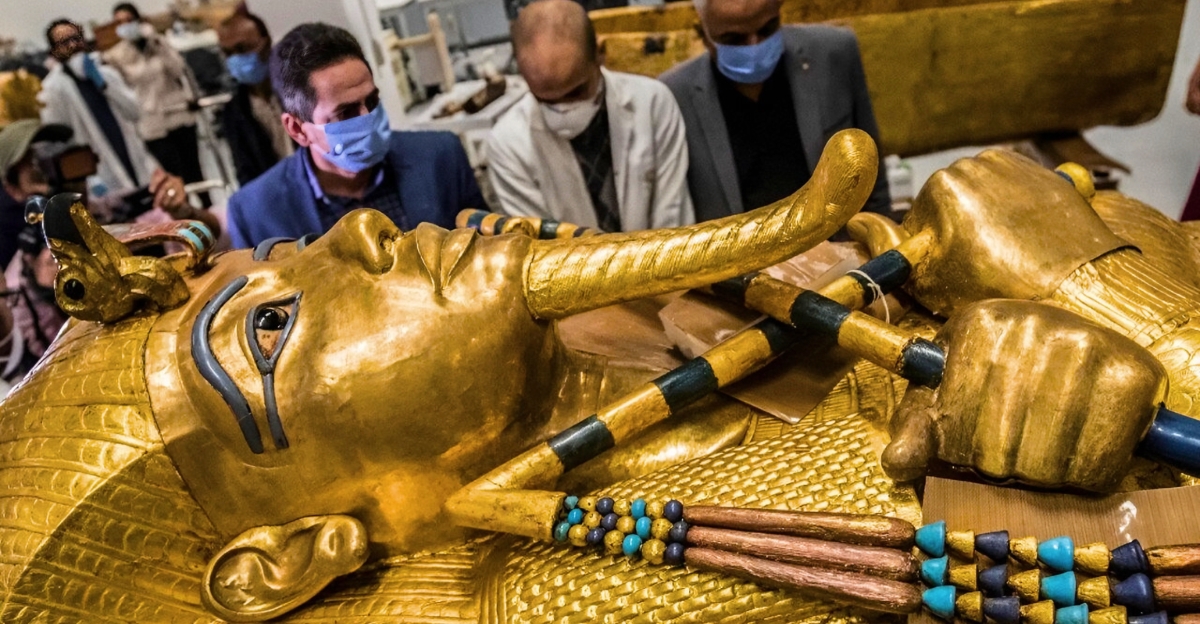
King Tutankhamun has long amazed and baffled people from his grave, and he’s not planning on stopping anytime soon. These 163 priceless treasures have made their way to a museum to give visitors a glimpse into ancient Egyptian history and culture. These remarkable artifacts have been preserved for over 3,000 years, and all belonged to the young pharaoh. Treasures like these are why people keep King Tut’s legend alive to this day.
The Grand Arrival
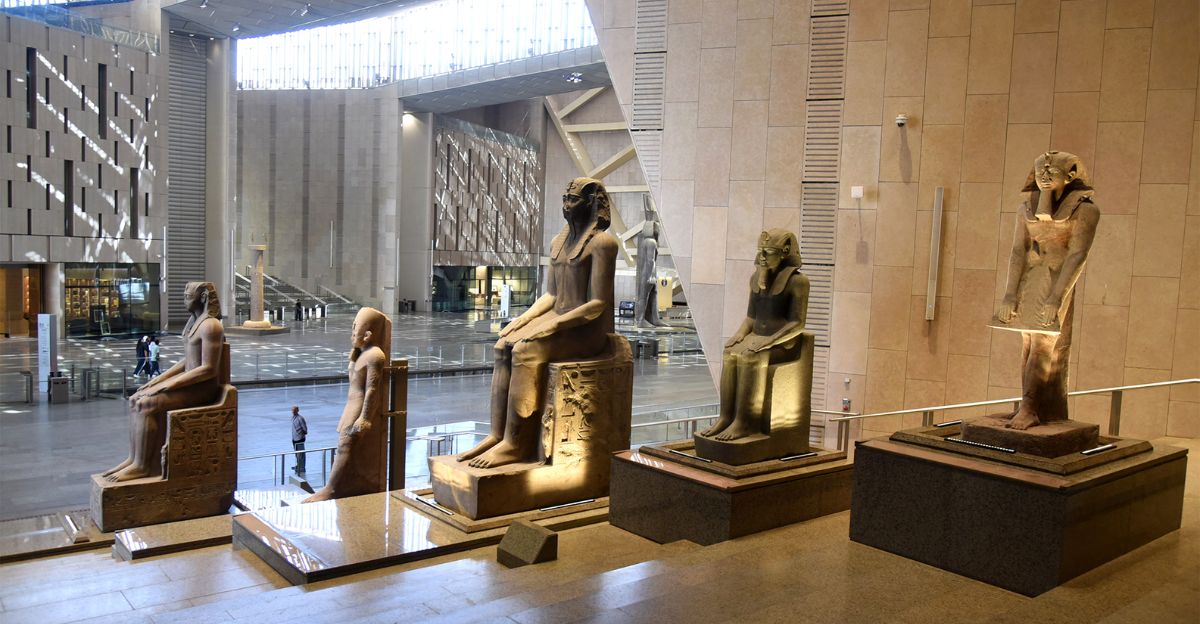
These treasures will make the Grand Egyptian Museum (GEM) in Giza their forever home. The collection was carefully transferred from the Egyptian Museum in Cairo as part of an ambitious plan to reunite and display the entire collection of the young pharaoh in one place for the first time. This anticipated collection will open to the public on July 3, 2025.
“The arrival of these remarkable treasures heralds the final phase of preparations ahead of the Grand Egyptian Museum’s official inauguration,” said the Minister of Tourism and Antiquities, Sherif Fathi.
The Journey from Cairo to Giza

Moving these treasures was no easy feat and was part of a carefully orchestrated and highly secure operation. Each artifact was meticulously packed and transported with the utmost care to prevent any damage during the move. Upon arrival at the Grand Egyptian Museum, the treasures underwent detailed condition assessments and conservation treatments in their advanced restoration laboratories to ensure their preservation.
The final and most iconic piece is set to be the last artifact to make the journey before being reunited with one of the young pharaoh’s most impressive collections.
Conservation and Restoration Efforts
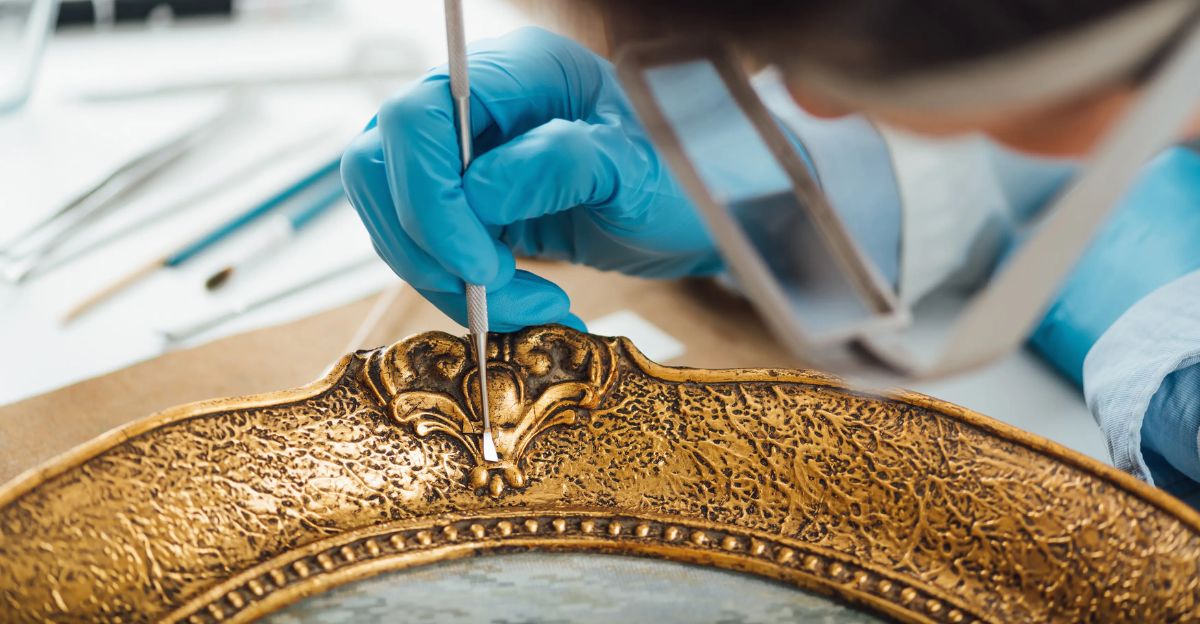
Before this astonishing collection can be shown to the public, each artifact needs to undergo thorough condition assessments in the museum’s state-of-the-art conservation laboratories. Expert teams then carry out any necessary restoration work to preserve these delicate and ancient objects. This meticulous process ensures that the treasures, which date back to the late 18th Dynasty, are stabilized and protected for the current exhibition and future generations.
The museum’s advanced facilities and skilled conservators use the latest techniques to maintain the integrity of these priceless relics.
Complete Display of King Tut’s Treasures
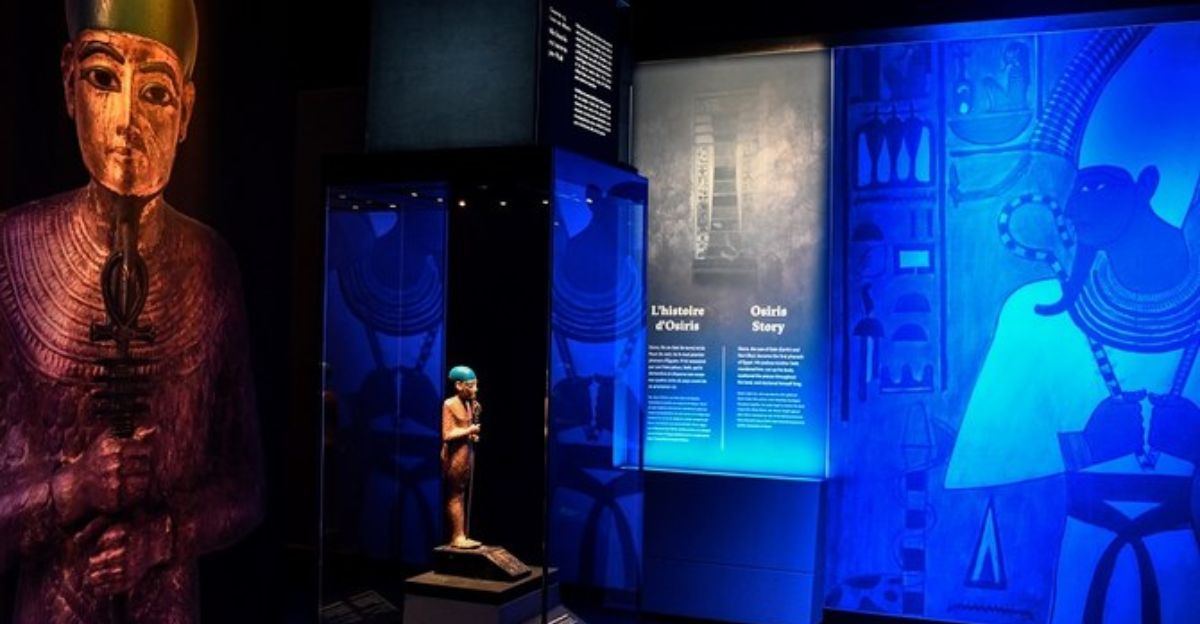
This exhibition will be the only one of its kind, showcasing the complete collection of King Tutankhamun’s treasures in a comprehensive display. This historic assembly includes over 5,000 artifacts discovered in the boy king’s tomb, far beyond the roughly 2,000 pieces previously exhibited at the Egyptian Museum in Cairo.
The museum’s spacious, state-of-the-art galleries are designed to showcase these priceless relics with immersive storytelling and advanced conservation techniques, allowing visitors to experience the tomb’s treasures as they were initially found.
Highlights of the New Treasures
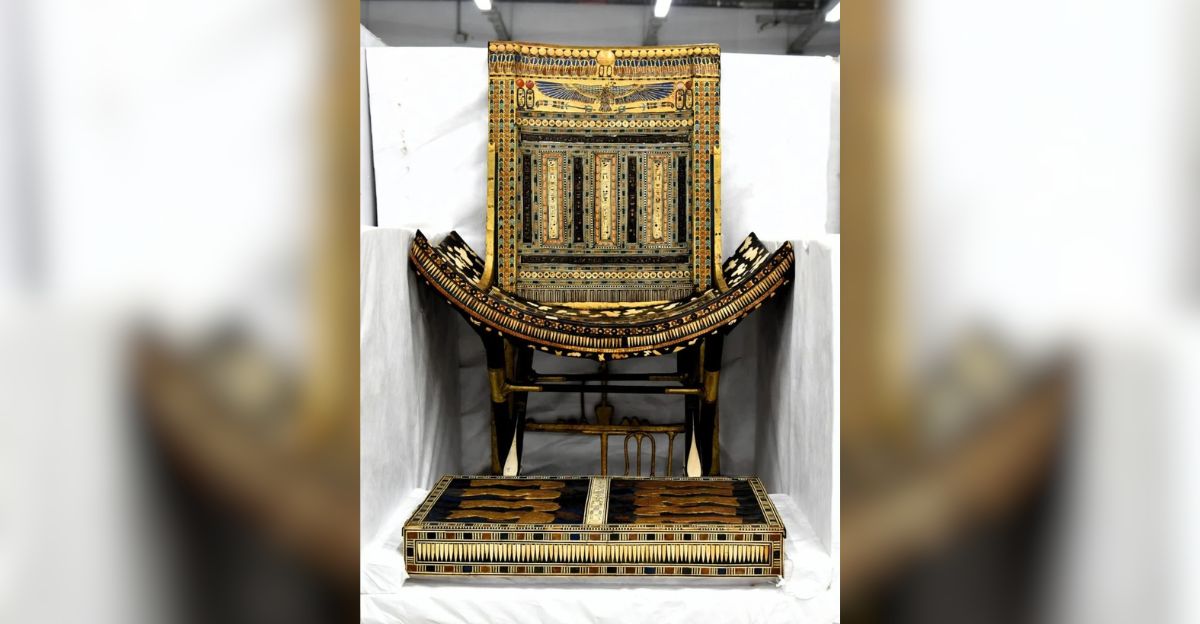
Some remarkable pieces form part of this collection, and they will be much anticipated in this exhibit. Some of those pieces include King Tutankhamun’s ceremonial chair, an exquisite piece inlaid with ivory and gold that exemplifies the artistry of the New Kingdom, and an intricately decorated footstool featuring gilded motifs symbolizing Egypt’s traditional enemies.
The collection also includes gilded chariots, jewelry, and personal items that offer intimate insights into the boy king’s life and reign. To top it all off, the iconic golden funerary mask will soon make its way to the museum as the final touch to this royal collection.
The Golden Funerary Mask

King Tutankhamun’s golden funerary mask is one of the most iconic artifacts from ancient Egypt, showing just how talented the New Kingdom’s 18th Dynasty was. This mask is made from solid gold and weighs nearly 22 lbs. It is inlaid with semi-precious stones like lapis lazuli, carnelian, obsidian, and turquoise. Hieroglyphic inscriptions from the Book of the Dead are engraved on the mask’s shoulders and back, ensuring Tutankhamun’s protection in the afterlife.
Howard Carter discovered this mask in 1925 the Valley of the Kings after more than 3,000 years of burial. It is one of the most well-preserved ancient Egyptian artifacts that tells the story of their lives.
Global Exhibitions and Legacy
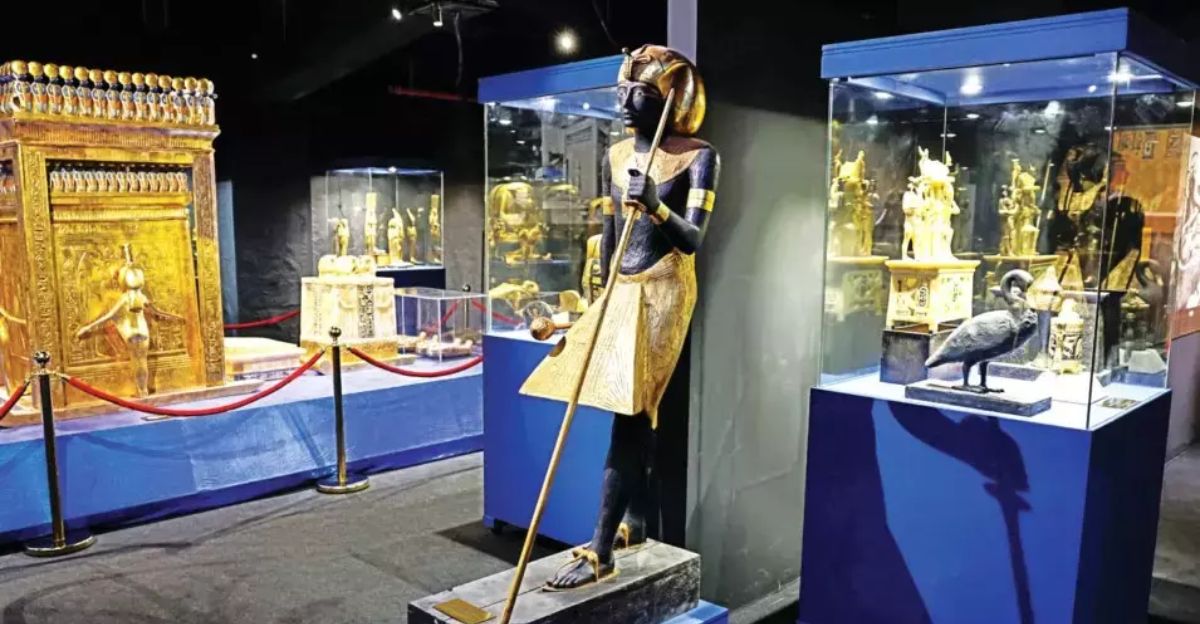
Since their discovery in the 1920s, these artifacts have toured extensively, with some of the most famous exhibitions including the “Treasures of Tutankhamun” tour from 1972 to 1981, which attracted millions across the United Kingdom, the United States, Canada, Japan, and other countries.
More recent tours, like the 2019–2020 “TUTANKHAMUN: Treasures of the Golden Pharaoh” show at London’s Saatchi Gallery, combined immersive digital experiences with the display of over 150 original artifacts, many traveling abroad for the first time. Displays like these help capture the world’s interest in ancient Egypt and the lives they lived.
Technological Innovations in Display
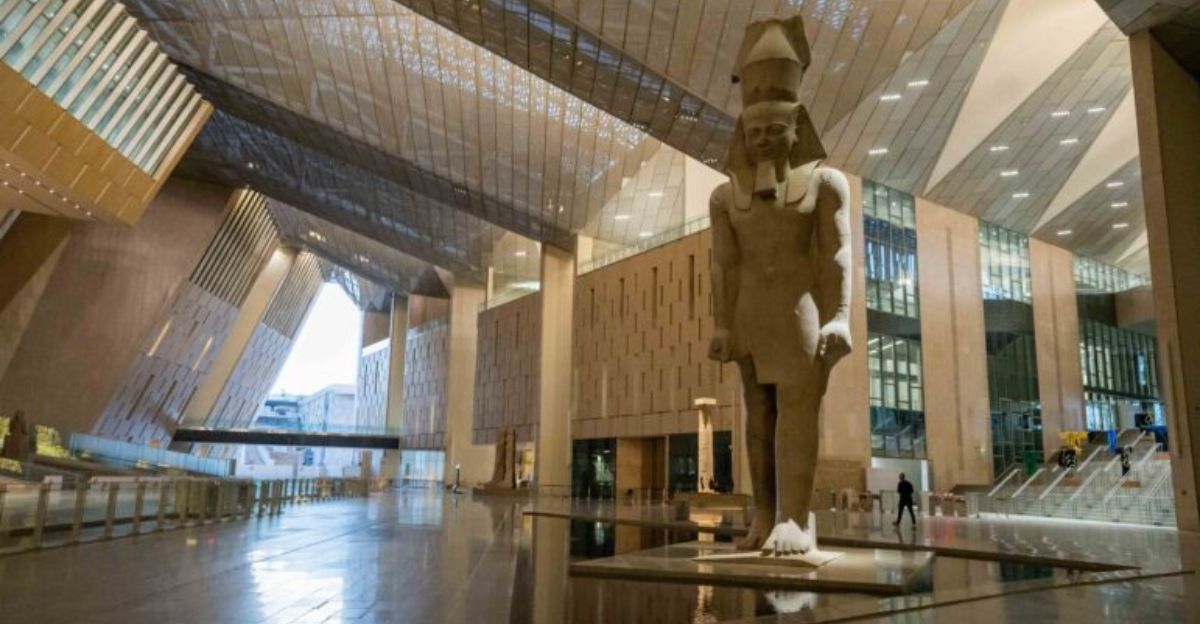
When you think that a display is overwhelmingly good, this museum takes it to the next level with its display style. The museum uses immersive multimedia elements like large-scale video projections, virtual reality experiences, and holographic displays that bring the boy king’s world to life. Visitors can engage with interactive digital storytelling, including 360-degree virtual tours of the tomb and holograms illustrating ancient rituals like mummification.
State-of-the-art glass display cases by Goppion also have advanced climate control systems that regulate humidity and temperature, ensuring the delicate King Tutankhamun artifacts remain perfectly preserved while on view. Incorporating technology into the exhibit takes the visitor experience to a different level, creating a lasting impression of the collection.
Future Prospects and Museum Plans

This museum is quickly becoming one of the most up-and-coming museums that capture the imaginations of its visitors. Plans for the museum extend beyond the initial unveiling of King Tutankhamun’s complete treasure collection and other major artifacts like Khufu’s solar boat. Future initiatives include expanding educational programs, hosting international exhibitions, and fostering global collaborations to promote Egypt’s archaeological wealth.

